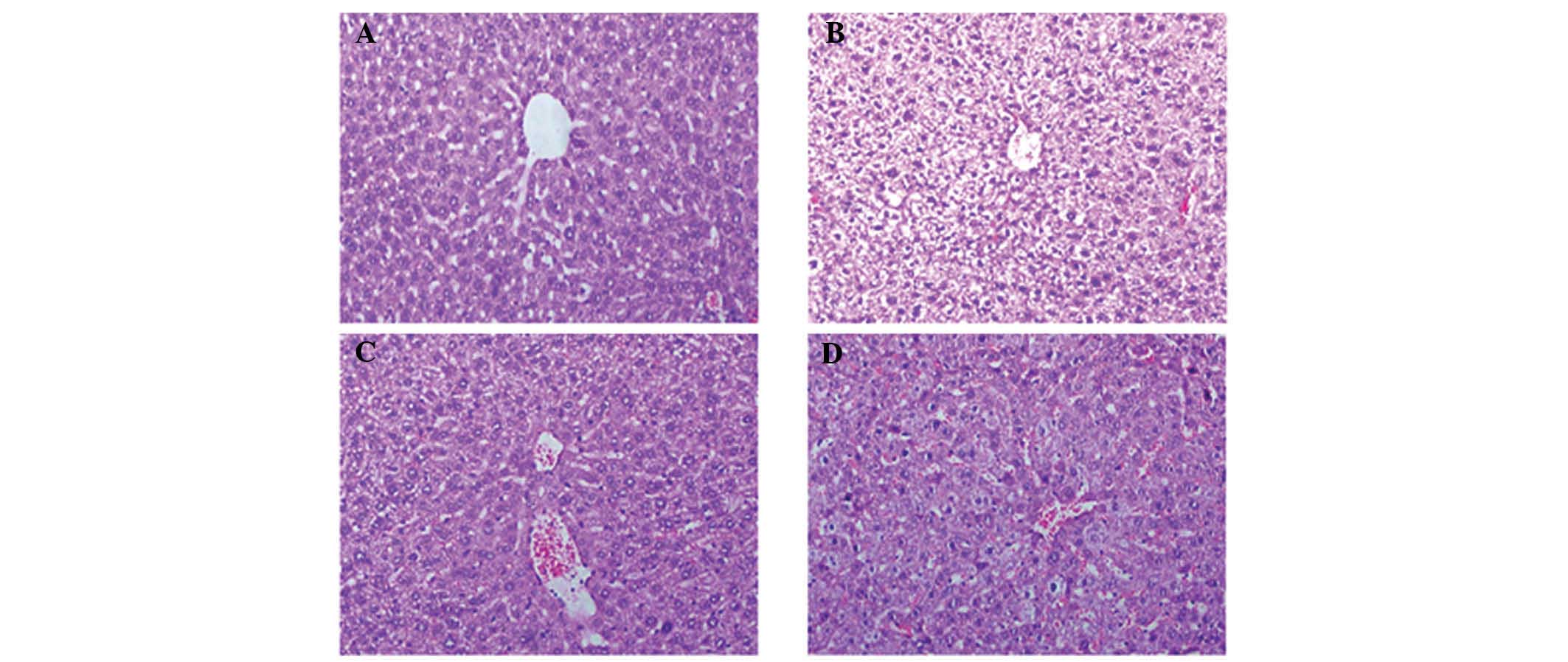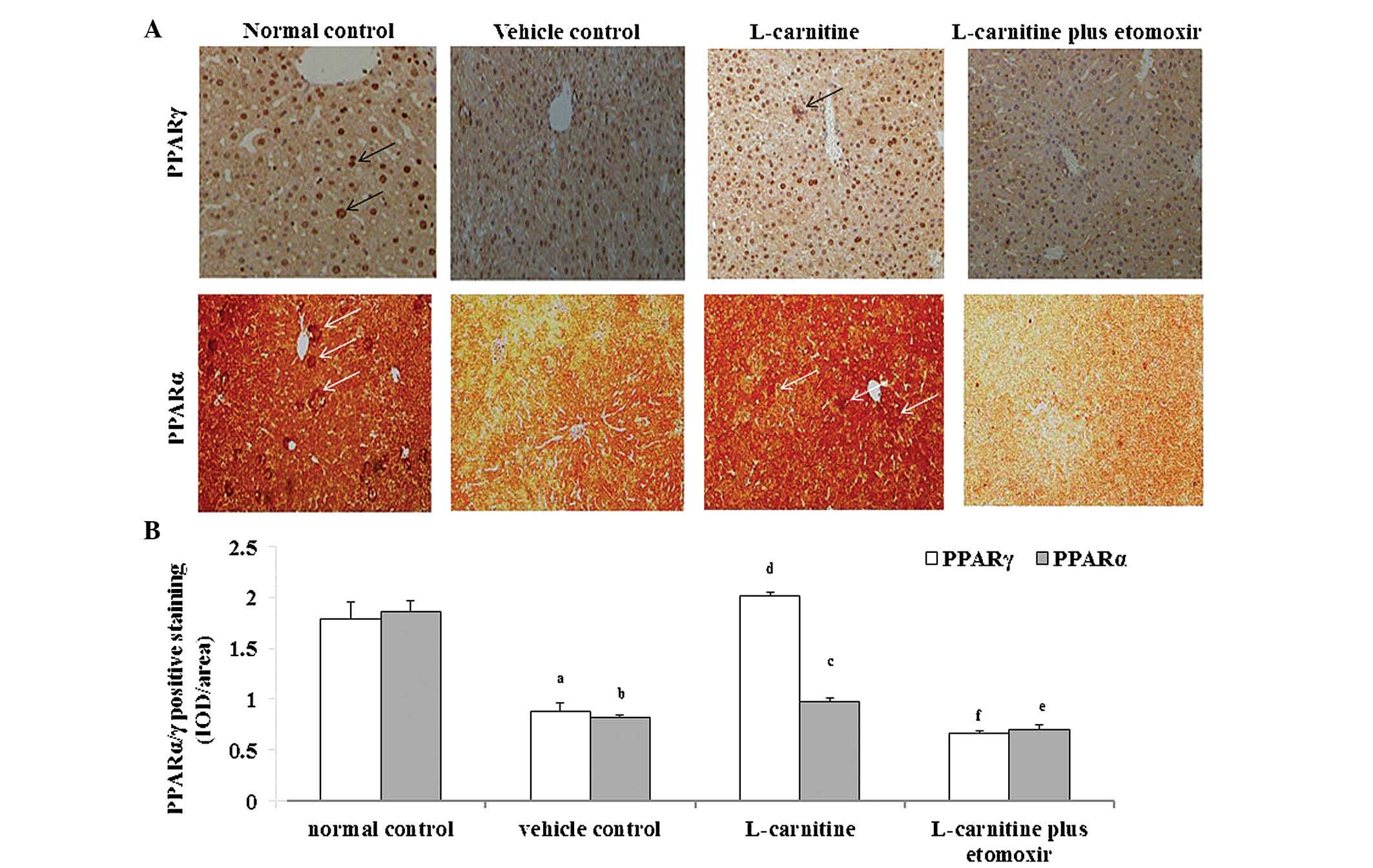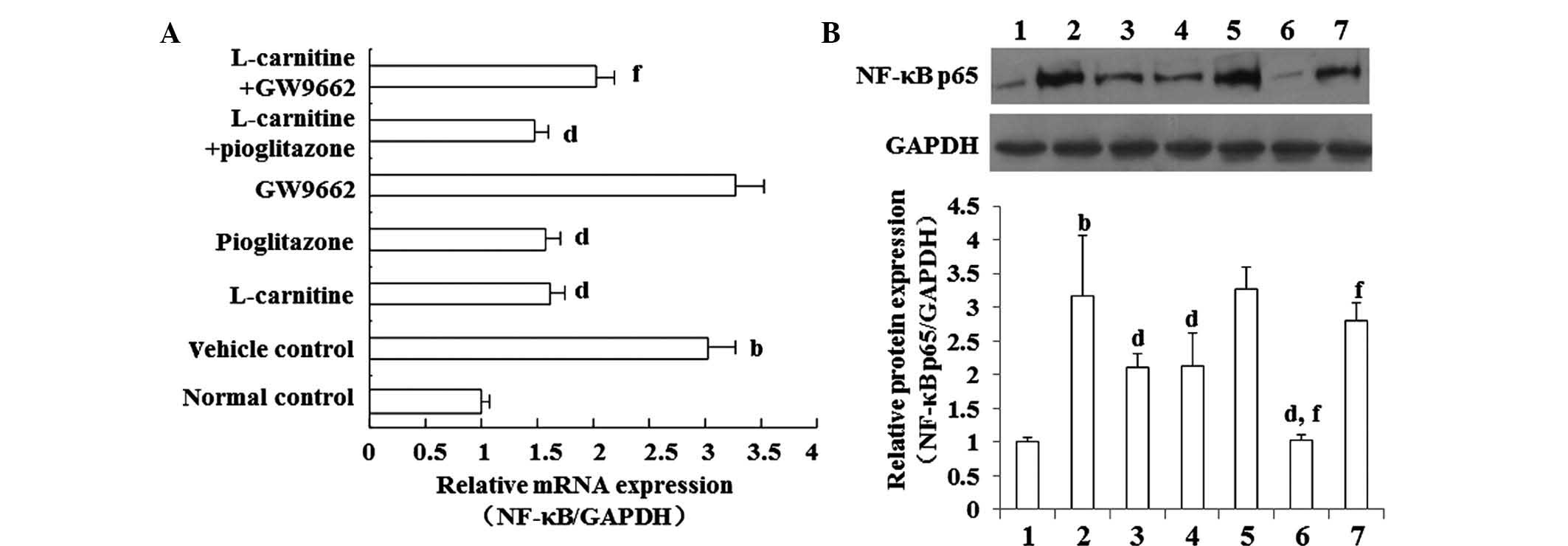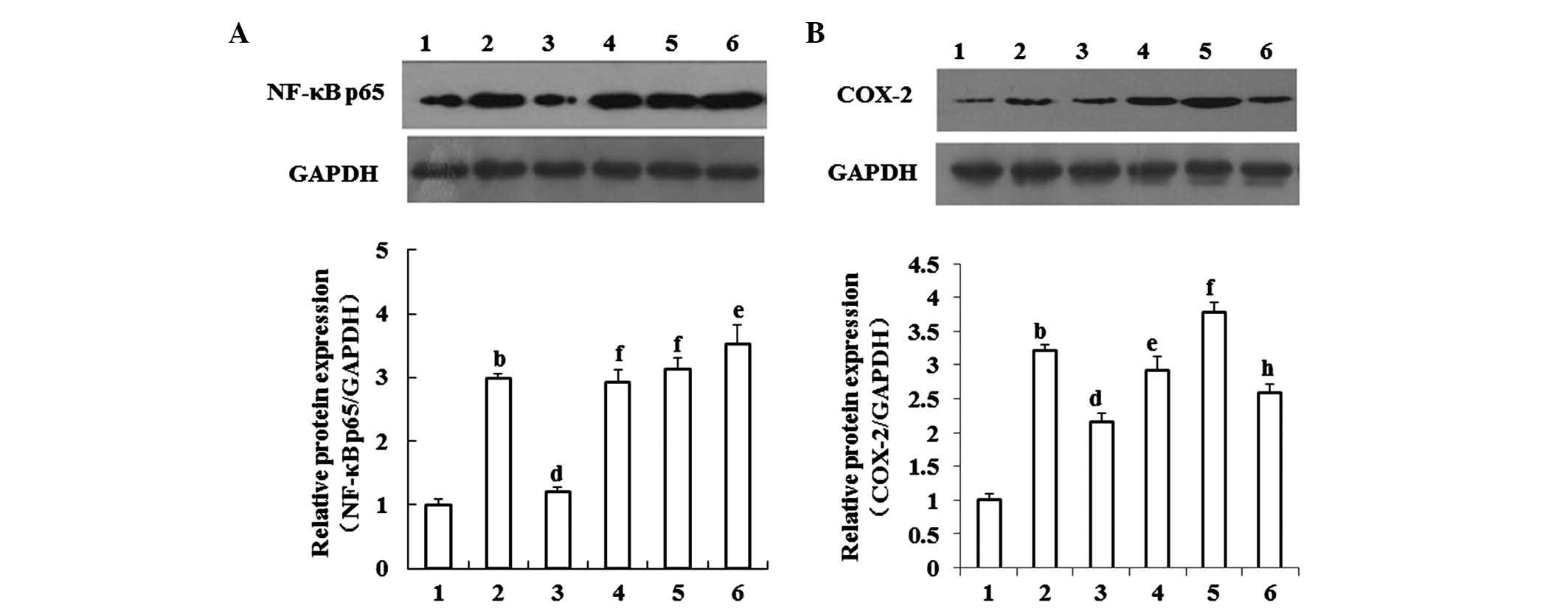|
1
|
Trutschnigg B, Kilgour RD, Morais JA,
Lucar E, Hornby L, Molla H and Vigano A: Metabolic, nutritional and
inflammatory characteristics in elderly women with advanced cancer.
J Geriatr Oncol. 4:183–189. 2013. View Article : Google Scholar : PubMed/NCBI
|
|
2
|
Richards CH, Roxburgh CS, MacMillan MT,
Isswiasi S, Robertson EG, Guthrie GK, Horgan PG and McMillan DC:
The relationships between body composition and the systemic
inflammatory response in patients with primary operable colorectal
cancer. PLoS One. 7:e418832012. View Article : Google Scholar : PubMed/NCBI
|
|
3
|
Liu S, Wu HJ, Zhang ZQ, Chen Q, Liu B, Wu
JP and Zhu L: L-carnitine ameliorates cancer cachexia in mice by
regulating the expression and activity of carnitine palmityl
transferase. Cancer Biol Ther. 12:125–130. 2011. View Article : Google Scholar : PubMed/NCBI
|
|
4
|
Jiang Y, Guo C, Zhang D, Zhang J, Wang X
and Geng C: The altered tight junctions: An important gateway of
bacterial translocation in cachexia patients with advanced gastric
cancer. J Interferon Cytokine Res. 34:518–525. 2014. View Article : Google Scholar : PubMed/NCBI
|
|
5
|
Wang LH, Yang XY, Mihalic K, Xiao W, Li D
and Farrar WL: Activation of estrogen receptor blocks
interleukin-6-inducible cell growth of human multiple myeloma
involving molecular cross-talk between estrogen receptor and STAT3
mediated by co-regulator PIAS3. J Biol Chem. 276:31839–31844. 2001.
View Article : Google Scholar : PubMed/NCBI
|
|
6
|
Bonetto A, Aydogdu T, Kunzevitzky N,
Guttridge DC, Khuri S, Koniaris LG and Zimmers TA: STAT3 activation
in skeletal muscle links muscle wasting and the acute phase
response in cancer cachexia. PLoS One. 6:e225382011. View Article : Google Scholar : PubMed/NCBI
|
|
7
|
Martignoni ME, Dimitriu C, Bachmann J,
Krakowski-Rosen H, Ketterer K, Kinscherf R and Friess H: Liver
macrophages contribute to pancreatic cancer-related cachexia. Oncol
Rep. 21:363–369. 2009.PubMed/NCBI
|
|
8
|
Watchorn TM, Dowidar N, Dejong CH, Waddell
ID, Garden OJ and Ross JA: The cachectic mediator proteolysis
inducing factor activates NF-kappaB and STAT3 in human Kupffer
cells and monocytes. Int J Oncol. 27:1105–1111. 2005.PubMed/NCBI
|
|
9
|
Wang W, Andersson M, Lõnnroth C, Svanberg
E and Lundholm K: Prostaglandin E and prostacyclin receptor
expression in tumor and host tissues from MCG 101-bearing mice: A
model with prostanoid-related cachexia. Int J Cancer. 115:582–590.
2005. View Article : Google Scholar : PubMed/NCBI
|
|
10
|
Mantovani G, Macciò A, Madeddu C, Serpe R,
Antoni G, Massa E, Dessì M and Panzone F: Phase II nonrandomized
study of the efficacy and safety of COX-2 inhibitor celecoxib on
patients with cancer cachexia. J Mol Med (Berl). 88:85–92. 2010.
View Article : Google Scholar
|
|
11
|
Sue YM, Chou HC, Chang CC, Yang NJ, Chou Y
and Juan SH: L-carnitine protects against carboplatin-mediated
renal injury: AMPK- and PPARα-dependent inactivation of NFAT3. PLoS
One. 9:e1040792014. View Article : Google Scholar
|
|
12
|
Ishikawa H, Takaki A, Tsuzaki R, Yasunaka
T, Koike K, Shimomura Y, Seki H, Matsushita H, Miyake Y, Ikeda F,
et al: L-carnitine prevents progression of non-alcoholic
steatohepatitis in a mouse model with upregulation of mitochondrial
pathway. PLoS One. 9:e1006272014. View Article : Google Scholar : PubMed/NCBI
|
|
13
|
Demiroren K, Dogan Y, Kocamaz H, Ozercan
IH, Ilhan S, Ustundag B and Bahcecioglu IH: Protective effects of
L-carnitine, N-acetylcysteine and genistein in an experimental
model of liver fibrosis. Clin Res Hepatol Gastroenterol. 38:63–72.
2014. View Article : Google Scholar
|
|
14
|
Vinci E, Rampello E, Zanoli L, Oreste G,
Pistone G and Malaguarnera M: Serum carnitine levels in patients
with tumoral cachexia. Eur J Intern Med. 16:419–423. 2005.
View Article : Google Scholar : PubMed/NCBI
|
|
15
|
Breitkreutz R, Babylon A, Hack V, Schuster
K, Tokus M, Böhles H, Hagmüller E, Edler L, Holm E and Dröge W:
Effect of carnitine on muscular glutamate uptake and intramuscular
glutathione in malignant diseases. Br J Cancer. 82:399–403. 2000.
View Article : Google Scholar : PubMed/NCBI
|
|
16
|
Khan SA, Ali A, Khan SA, Zahran SA,
Damanhouri G, Azhar E and Qadri I: Unraveling the complex
relationship triad between lipids, obesity and inflammation.
Mediators Inflamm. 2014:5027492014. View Article : Google Scholar
|
|
17
|
Silverio R, Laviano A, Rossi Fanelli F and
Seelaender M: L-Carnitine induces recovery of liver lipid
metabolism in cancer cachexia. Amino Acids. 42:1783–1792. 2012.
View Article : Google Scholar
|
|
18
|
Zambrano S, Blanca AJ, Ruiz-Armenta MV,
Miguel-Carrasco JL, Arévalo M, Vázquez MJ, Mate A and Vázquez CM:
L-Carnitine protects against arterial hypertension-related cardiac
fibrosis through modulation of PPAR-γ expression. Biochem
Pharmacol. 85:937–944. 2013. View Article : Google Scholar : PubMed/NCBI
|
|
19
|
El-Sheikh AA and Rifaai RA: Peroxisome
proliferator activator receptor (PPAR)-γ ligand, but Not PPAR-α,
ameliorates cyclophosphamide-induced oxidative stress and
inflammation in rat liver. PPAR Res. 2014:6263192014. View Article : Google Scholar
|
|
20
|
Chen K, Li J, Wang J, Xia Y, Dai W, Wang
F, Shen M, Cheng P, Zhang Y, Wang C, et al: 15-Deoxy-γ
12,14-prostaglandin J2 reduces liver impairment in a model of
ConA-induced acute hepatic inflammation by activation of PPAR γ and
Reduction in NF-κB Activity. PPAR Res. 2014:2156312014.
|
|
21
|
Song S, Attia RR, Connaughton S, Niesen
MI, Ness GC, Elam MB, Hori RT, Cook GA and Park EA: Peroxisome
prolif-erator activated receptor alpha (PPARalpha) and PPARgamma
coactivator (PGC-1alpha) induce carnitine palmitoyltransferase IA
(CPT-1A) via independent gene elements. Mol Cell Endocrinol.
325:54–63. 2010. View Article : Google Scholar : PubMed/NCBI
|
|
22
|
Kashinakunti SV, Kollur P, Kallaganada GS,
Rangappa M and Ingin JB: Comparative study of serum MDA and vitamin
C levels in non-smokers, chronic smokers and chronic smokers with
acute myocardial infarction in men. J Res Med Sci. 16:993–998.
2011.
|
|
23
|
Hübscher SG: Histological assessment of
non-alcoholic fatty liver disease. Histopathology. 49:450–465.
2006. View Article : Google Scholar : PubMed/NCBI
|
|
24
|
Jia XL, Li SY, Dang SS, Cheng YA, Zhang X,
Wang WJ, Hughes CE and Caterson B: Increased expression of
chondroitin sulphate proteoglycans in rat hepatocellular carcinoma
tissues. World J Gastroenterol. 18:3962–3976. 2012. View Article : Google Scholar : PubMed/NCBI
|
|
25
|
Tisdale MJ: Mechanisms of cancer cachexia.
Physiol Rev. 89:381–410. 2009. View Article : Google Scholar : PubMed/NCBI
|
|
26
|
Luna G, Florence L and Johansen K:
Hepatocellular carcinoma. A 5 year institutional experience. Am J
Surg. 149:591–594. 1985. View Article : Google Scholar : PubMed/NCBI
|
|
27
|
Barreiro E, de la Puente B, Busquets S,
López-Soriano FJ, Gea J and Argiles JM: Both oxidative and
nitrosative stress are associated with muscle wasting in
tumour-bearing rats. FEBS Lett. 579:1646–1652. 2005. View Article : Google Scholar : PubMed/NCBI
|
|
28
|
Zeng T, Zhang CL, Song FY, Zhao XL and Xie
KQ: CMZ reversed chronic ethanol-induced disturbance of PPAR-α
possibly by suppressing oxidative stress and PGC-1α acetylation and
activating the MAPK and GSK3β pathway. PLoS One. 9:e986582014.
View Article : Google Scholar
|
|
29
|
Al Rouq F and El Eter E: PPAR-γ activator
induces neuropro-tection in hypercholesterolemic rats subjected to
global cerebral ischemia/reperfusion injury: In vivo and in vitro
inhibition of oxidative stress. Exp Gerontol. 51:1–7. 2014.
View Article : Google Scholar : PubMed/NCBI
|
|
30
|
Moore-Carrasco R, Figueras M, Ametller E,
López-Soriano FJ, Argilés JM and Busquets S: Effects of the
PPARgamma agonist GW1929 on muscle wasting in tumour-bearing mice.
Oncol Rep. 19:253–256. 2008.
|
|
31
|
Puigserver P, Rhee J, Lin J, Wu Z, Yoon
JC, Zhang CY, Krauss S, Mootha VK, Lowell BB and Spiegelman BM:
Cytokine stimulation of energy expenditure through p38 MAP kinase
activation of PPARgamma coactivator-1. Mol Cell. 8:971–982. 2001.
View Article : Google Scholar : PubMed/NCBI
|
|
32
|
Asp Ml, Tian M, Kliewer KL and Belury MA:
Rosiglitazone delayed weight loss and anorexia while attenuating
adipose depletion in mice with cancer cachexia. Cancer Biol Ther.
12:957–965. 2011. View Article : Google Scholar : PubMed/NCBI
|
|
33
|
Huang J, Das SK, Jha P, Al Zoughbi W,
Schauer S, Claudel T, Sexl V, Vesely P, Birner-Gruenberger R,
Kratky D, et al: The PPARα agonist fenofibrate suppresses B-cell
lymphoma in mice by modulating lipid metabolism. Biochim Biophys
Acta. 1831:1555–1565. 2013. View Article : Google Scholar : PubMed/NCBI
|
|
34
|
Yuan K, Huang C, Fox J, Gaid M, Weaver A,
Li G, Singh BB, Gao H and Wu M: Elevated inflammatory response in
caveolin-1-deficient mice with Pseudomonas aeruginosa infection is
mediated by STAT3 protein and nuclear factor kappaB (NF-kappaB). J
Biol Chem. 286:21814–21825. 2011. View Article : Google Scholar : PubMed/NCBI
|
|
35
|
Zhou W, Jiang ZW, Tian J, Jiang J, Li N
and Li JS: Role of NF-kappaB and cytokine in experimental cancer
cachexia. World J Gastroenterol. 9:1567–1570. 2003. View Article : Google Scholar : PubMed/NCBI
|
|
36
|
Li CC, Yang HT, Hou YC, Chiu YS and Chiu
WC: Dietary fish oil reduces systemic inflammation and ameliorates
sepsis-induced liver injury by up-regulating the peroxisome
proliferator-activated receptor gamma-mediated pathway in septic
mice. J Nutr Biochem. 25:19–25. 2014. View Article : Google Scholar
|
|
37
|
Zuniga J, Cancino M, Medina F, Varela P,
Vargas R, Tapia G, Videla LA and Fernández V: N-3 PUFA
supplementation triggers PPAR-α activation and PPAR-alpha/NF-κB
interaction: Anti-inflammatory implications in liver
ischemia-reperfusion injury. PLoS One. 6:e285022011. View Article : Google Scholar
|
|
38
|
Ozturk H, Gezici A and Ozturk H: The
effect of celecoxib, a selective COX-2 inhibitor, on liver
ischemia/reperfusion-induced oxidative stress in rats. Hepatol Res.
34:76–83. 2006. View Article : Google Scholar
|
|
39
|
Onesti JK and Guttridge DC: Inflammation
based regulation of cancer cachexia. Biomed Res Int.
2014:1684072014. View Article : Google Scholar : PubMed/NCBI
|
|
40
|
Cossette E, Cloutier I, Tardif K,
DonPierre G and Tanguay JF: Estradiol inhibits vascular endothelial
cells pro-inflammatory activation induced by C-reactive protein.
Mol Cell Biochem. 373:137–147. 2013. View Article : Google Scholar :
|
|
41
|
White JP, Baltgalvis KA, Puppa MJ, Sato S,
Baynes JW and Carson JA: Muscle oxidative capacity during
IL-6-dependent cancer cachexia. Am J Physiol Regul Integr Comp
Physiol. 300:R201–R211. 2011. View Article : Google Scholar :
|
|
42
|
Remels AH, Gosker HR, Langen RC and Schols
AM: The mechanisms of cachexia underlying muscle dysfunction in
COPD. J Appl Physiol (1985). 114:1253–1262. 2013. View Article : Google Scholar
|













